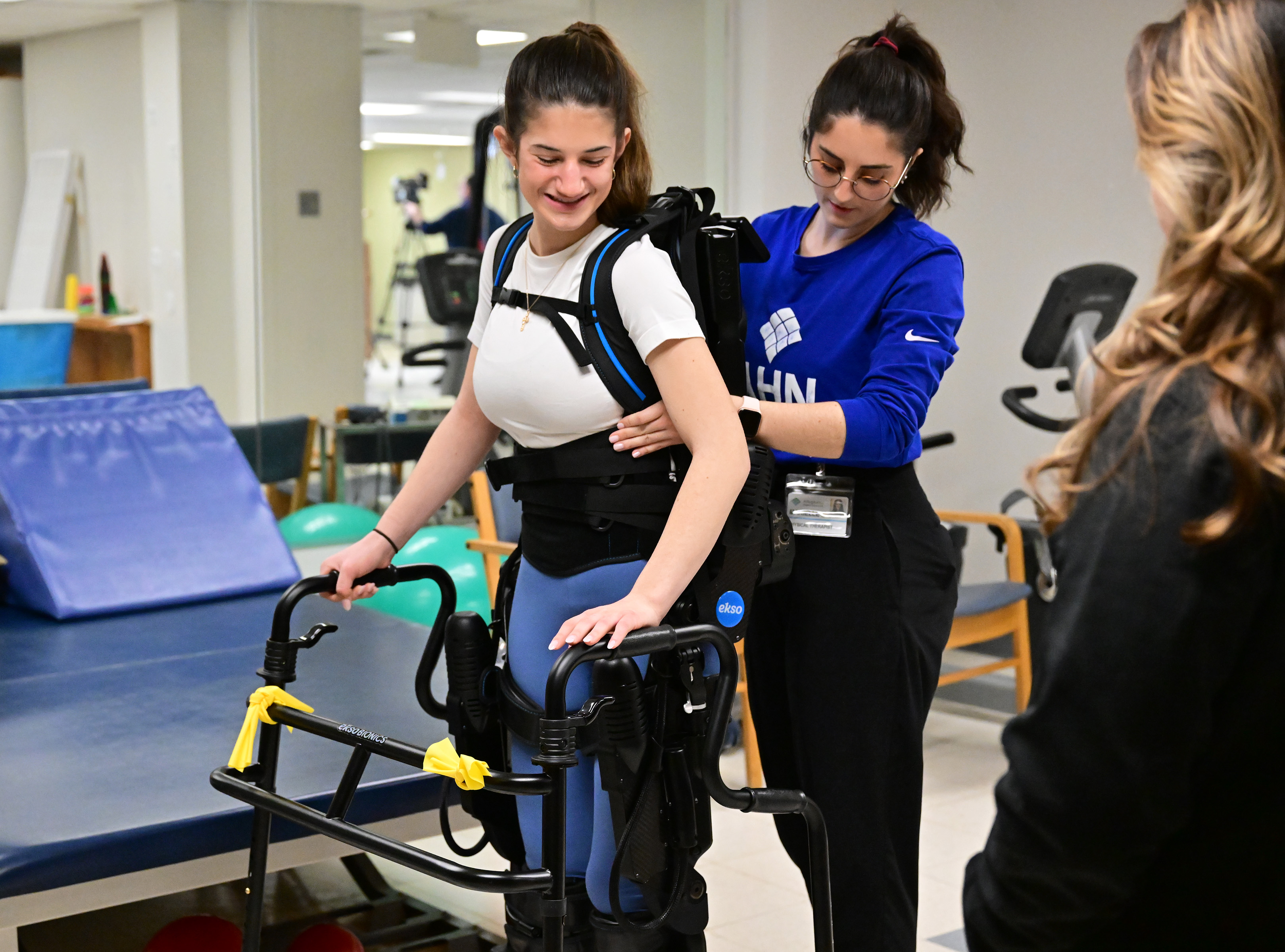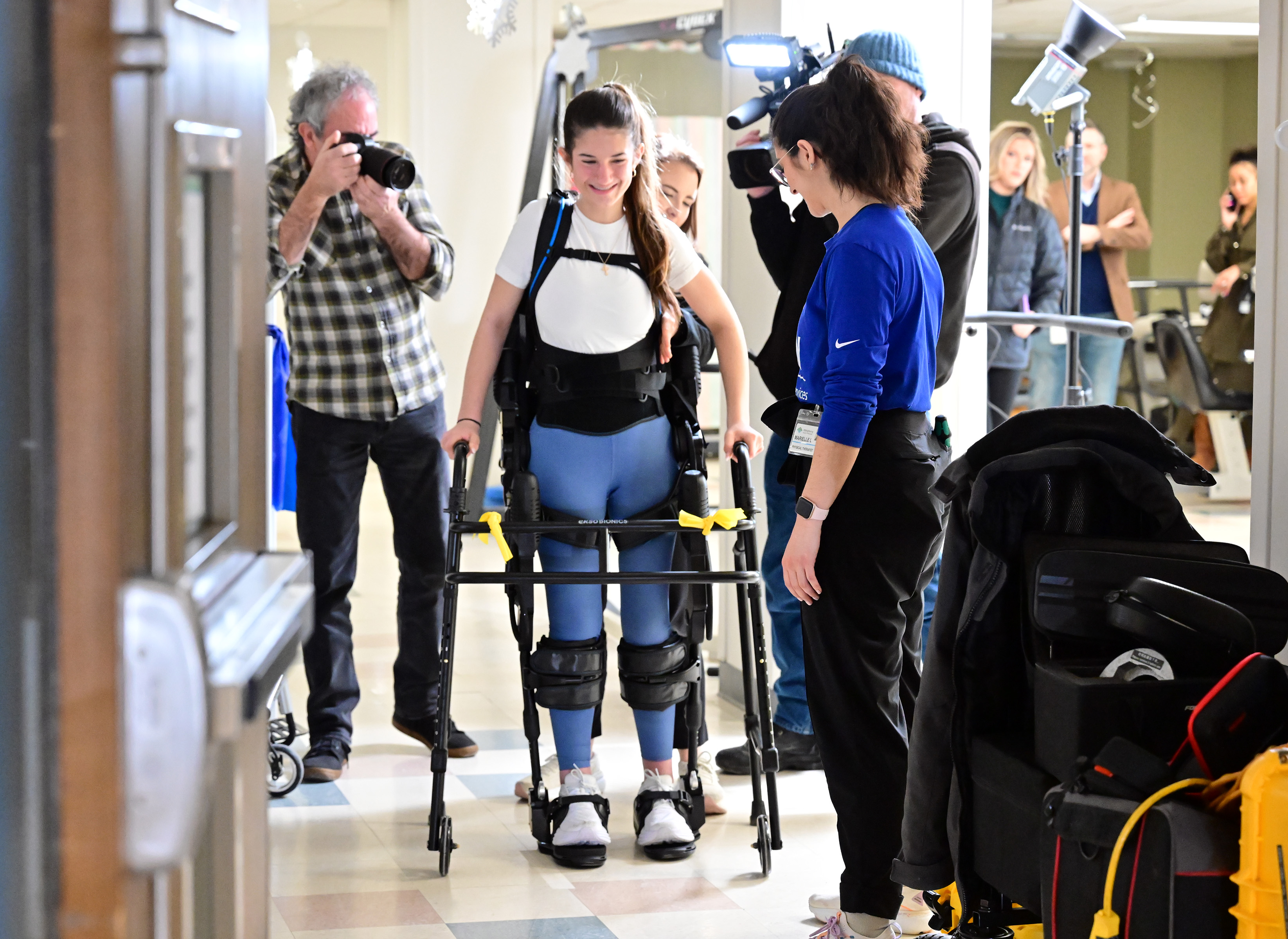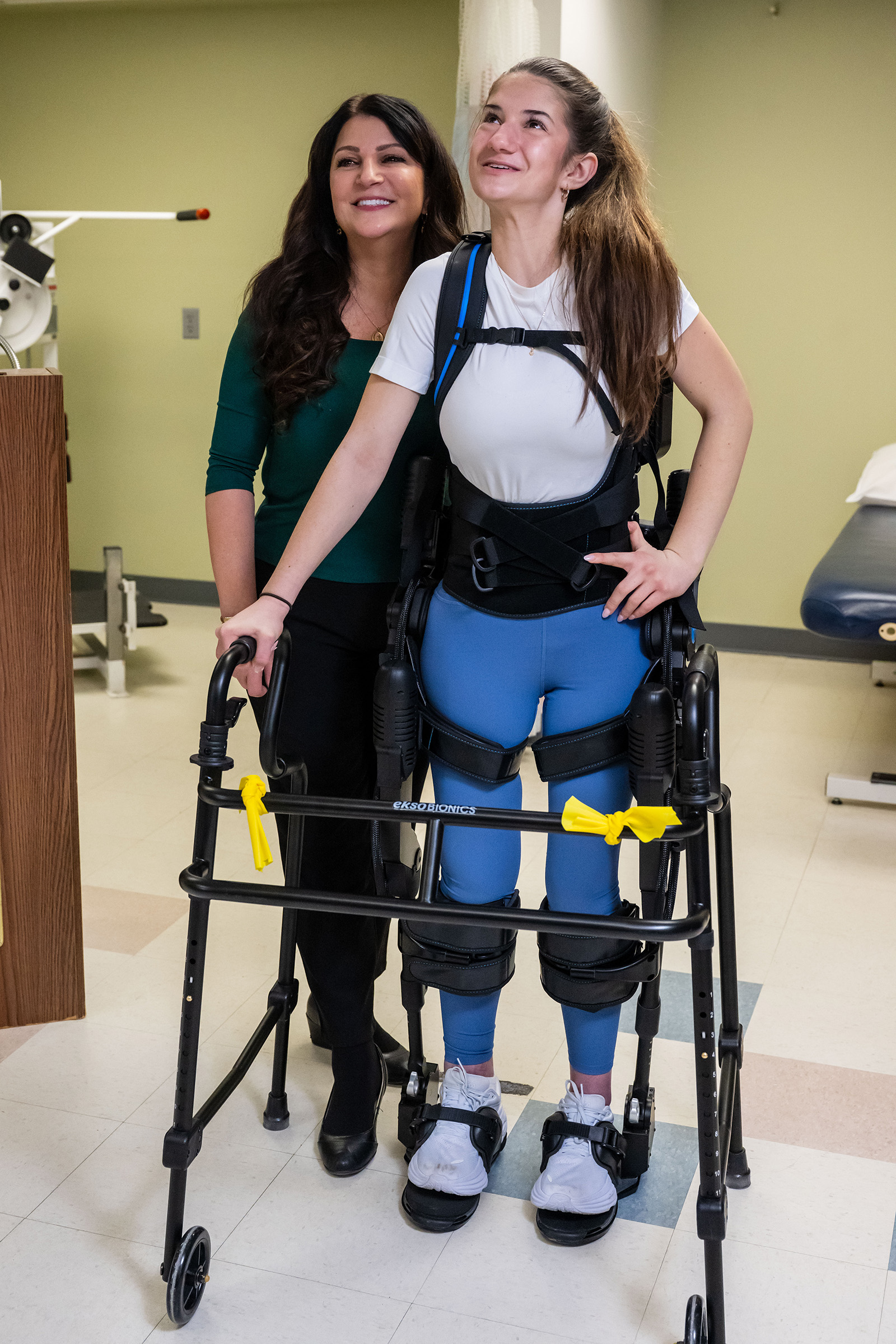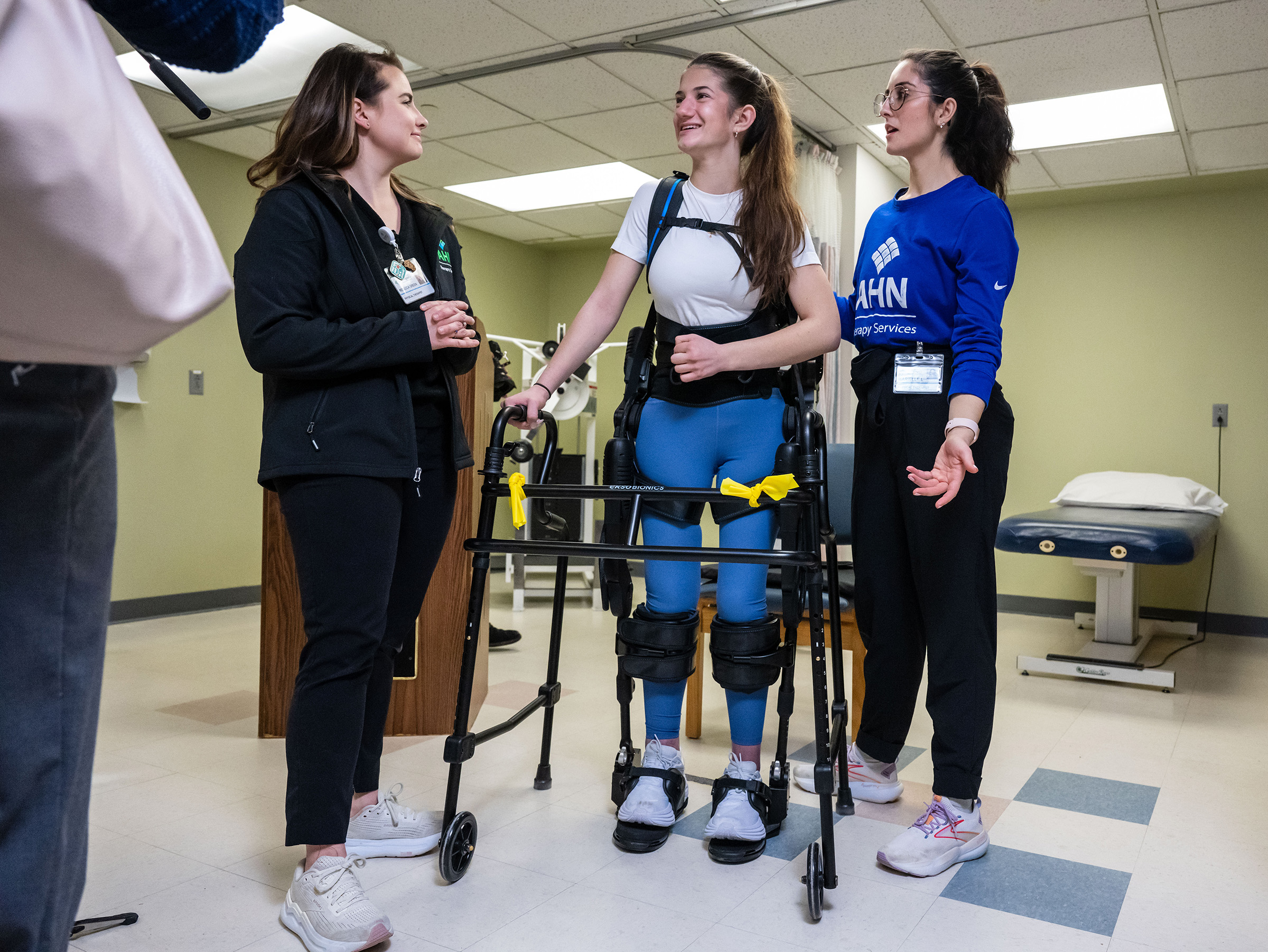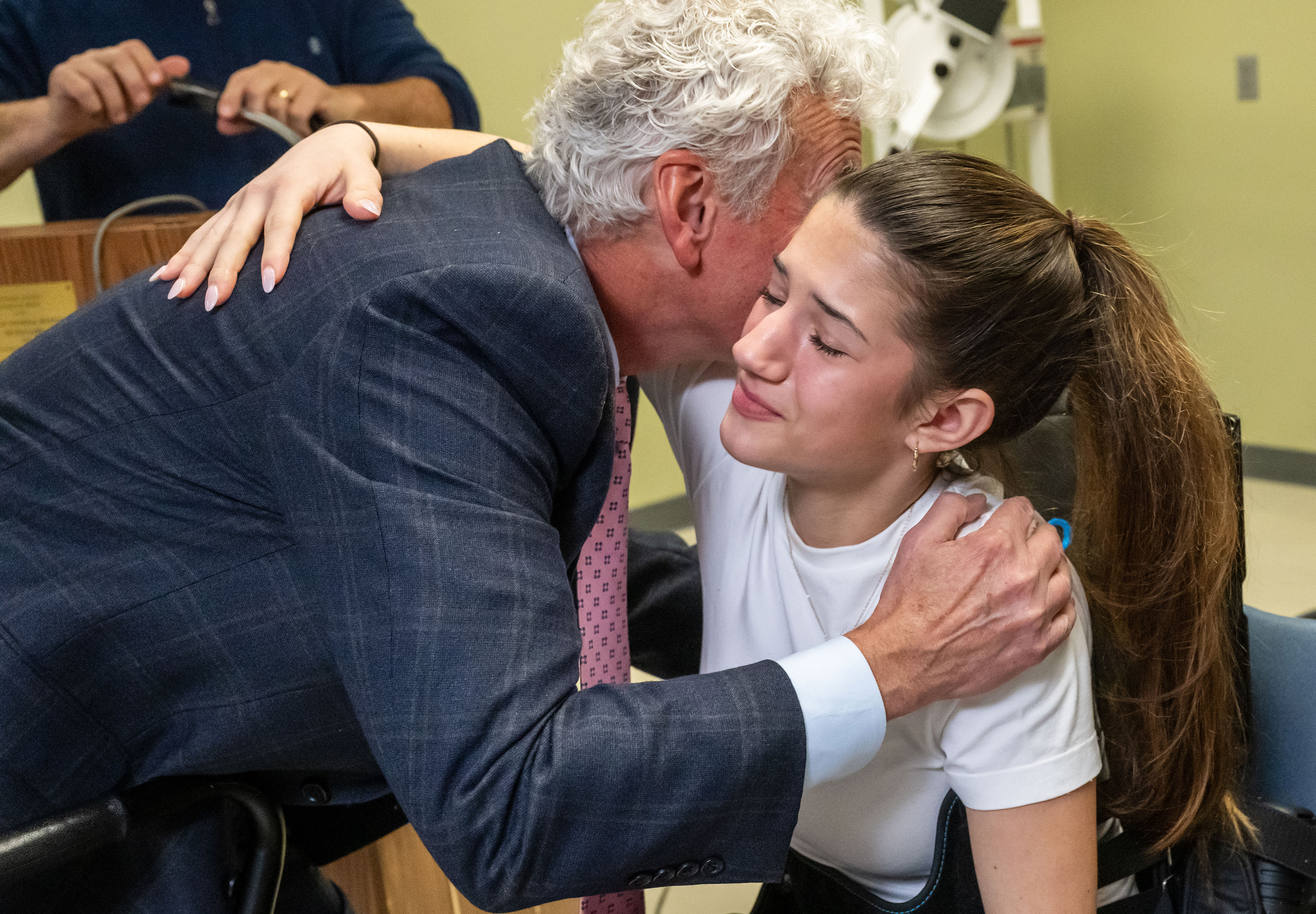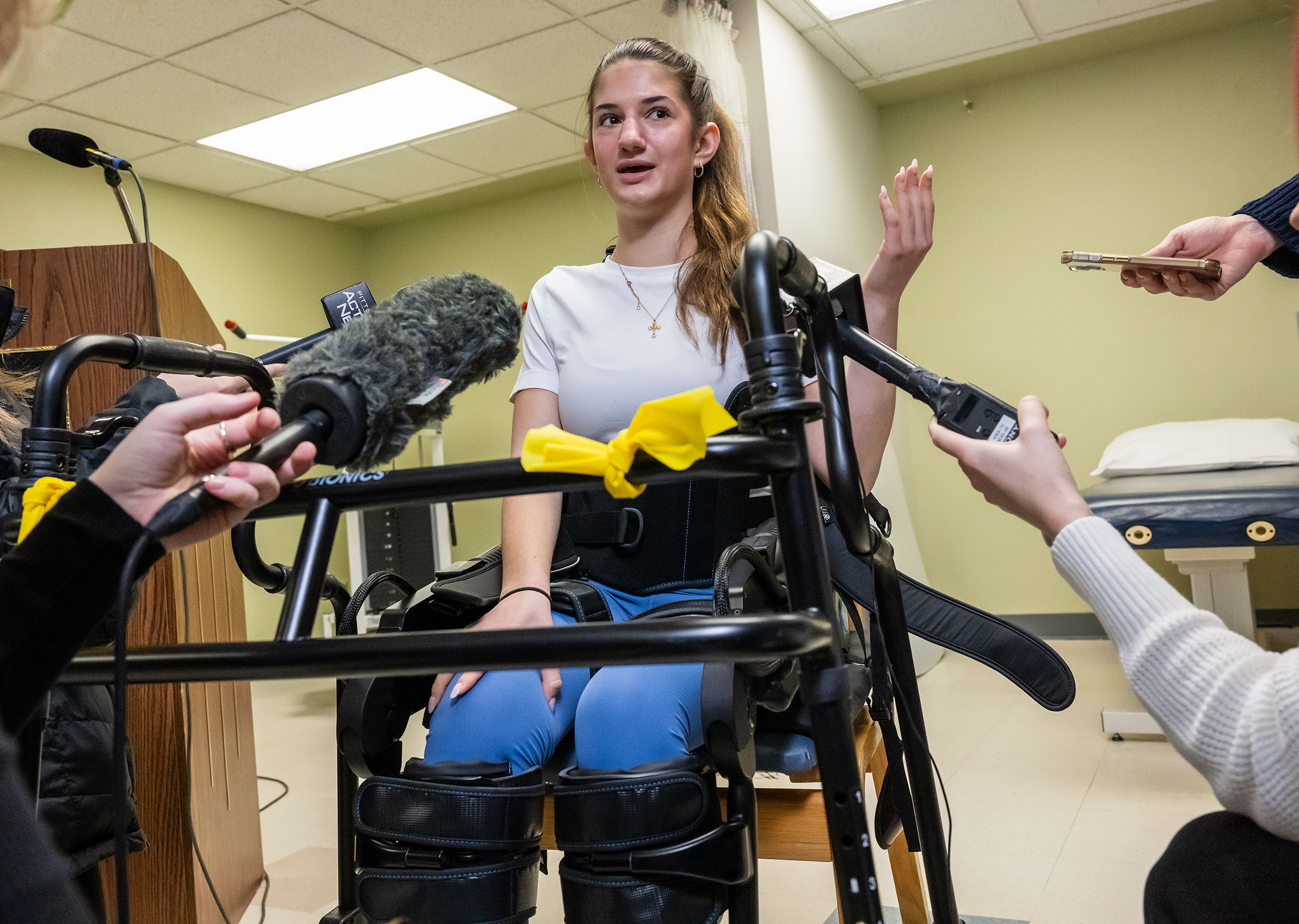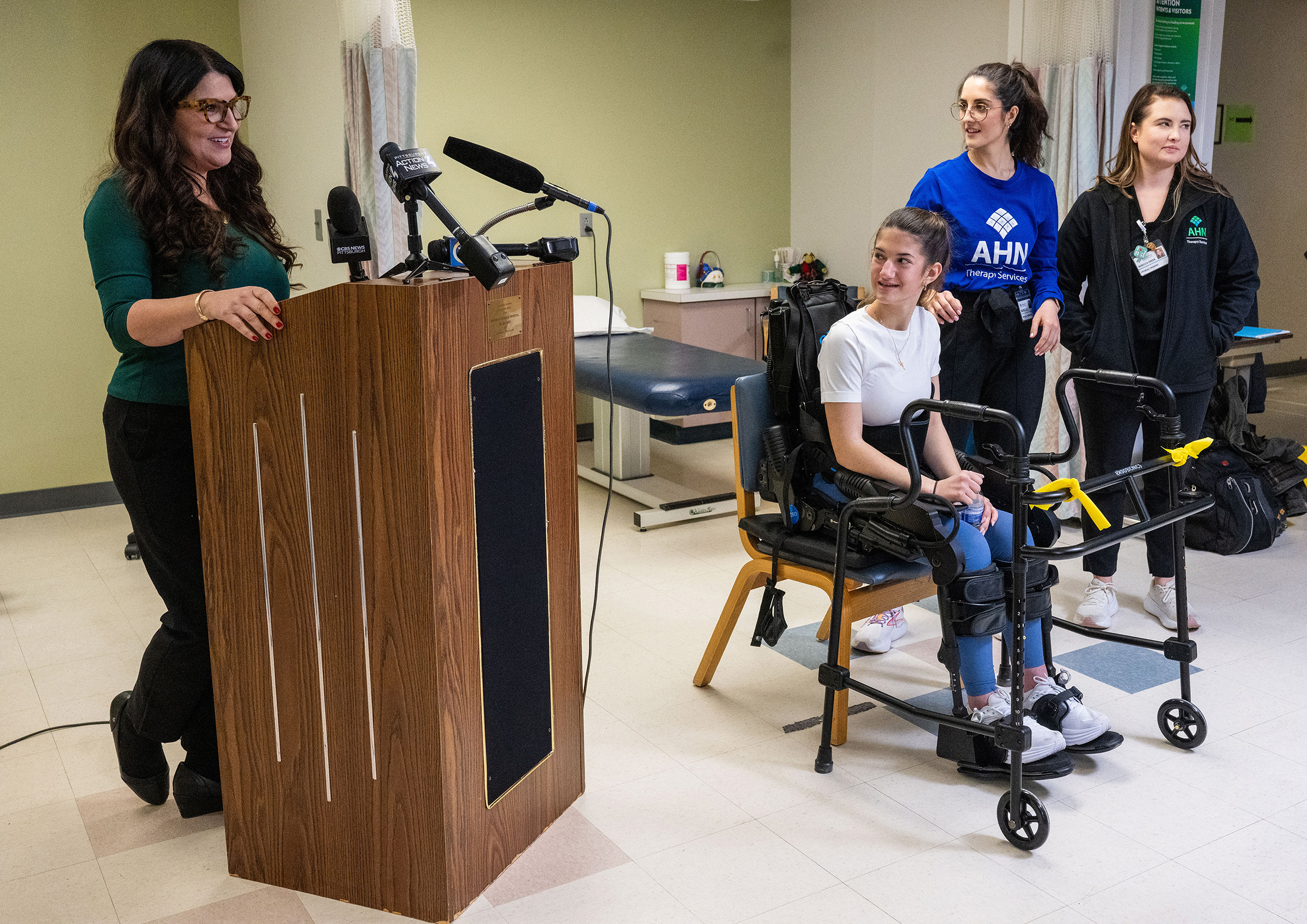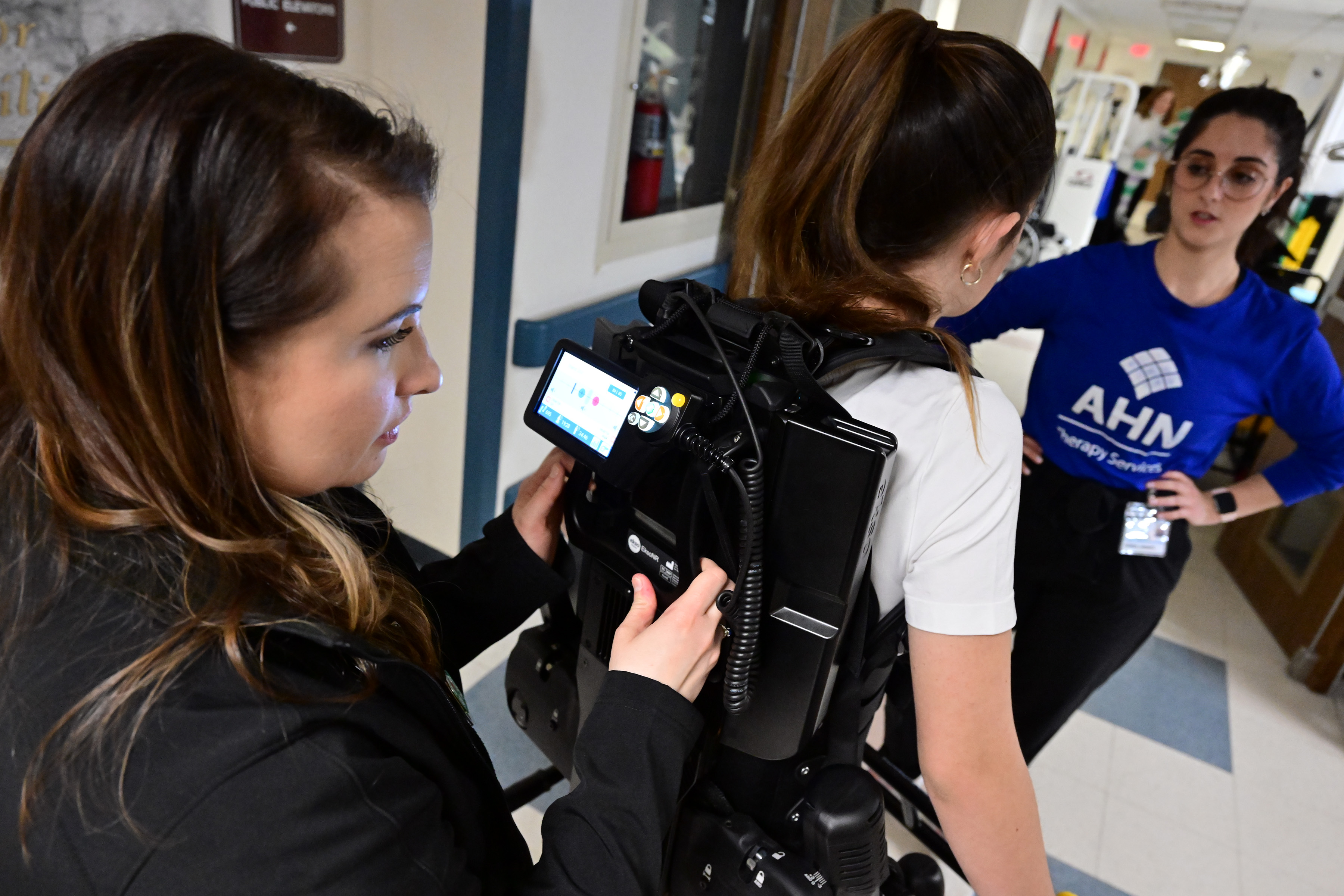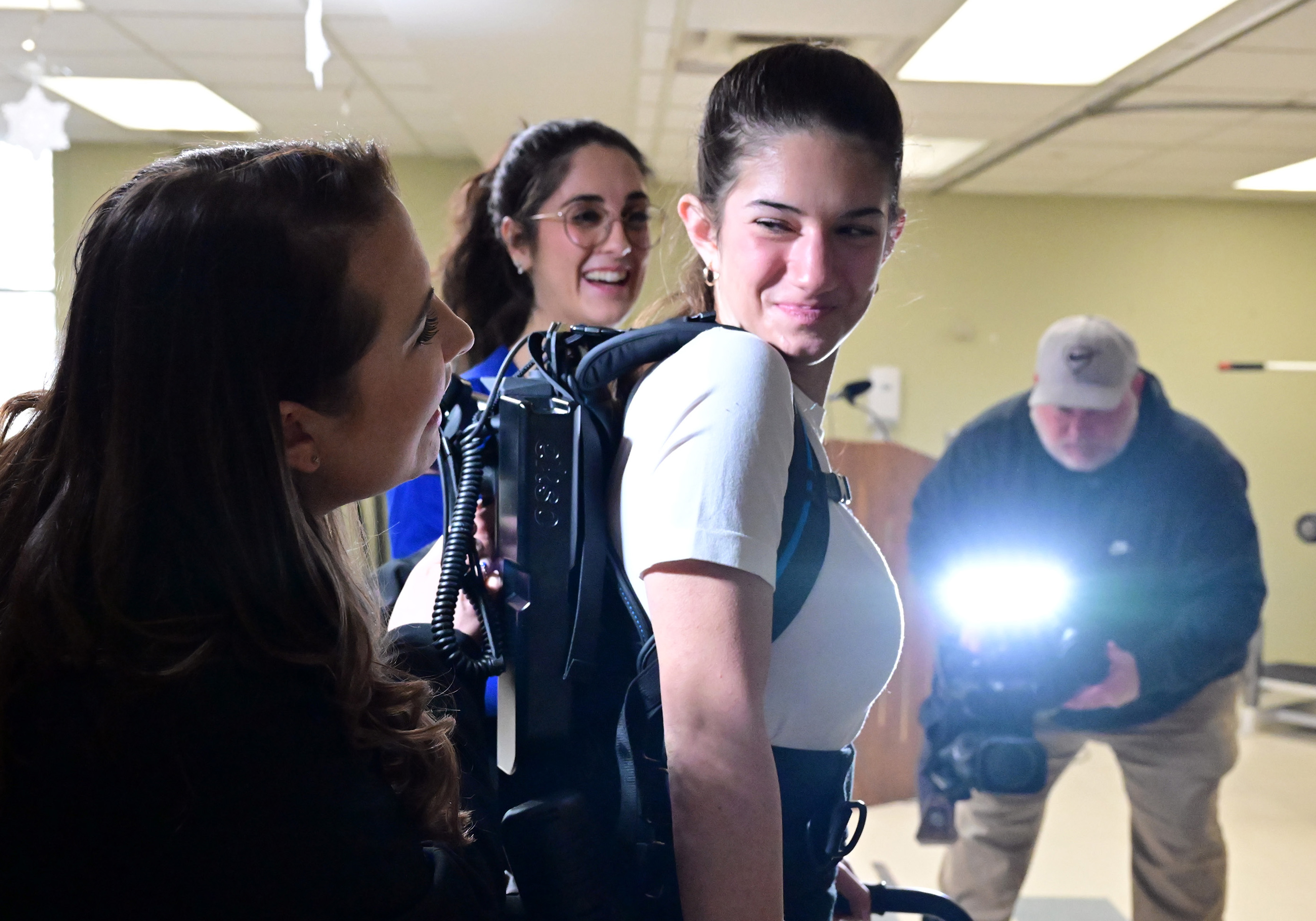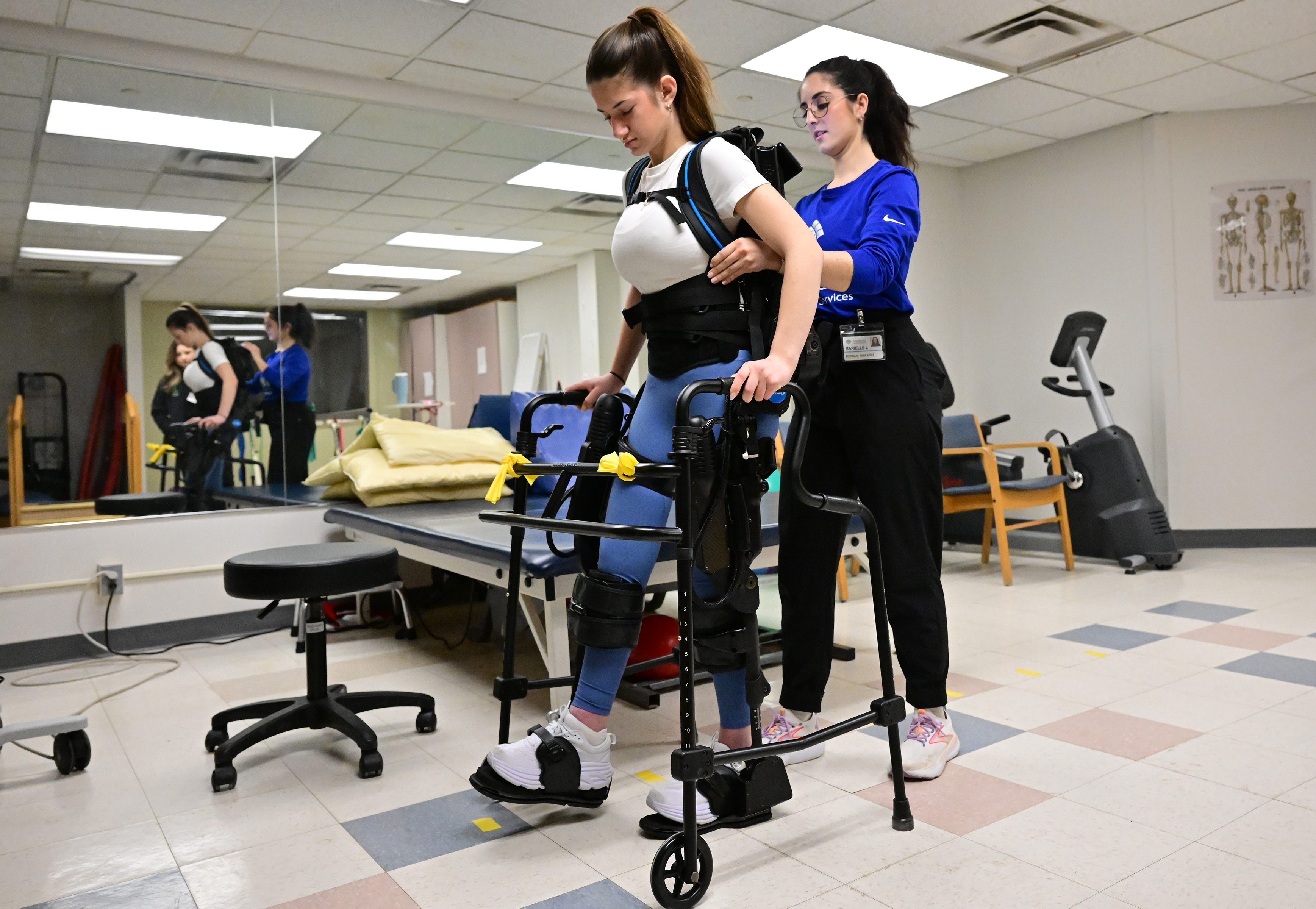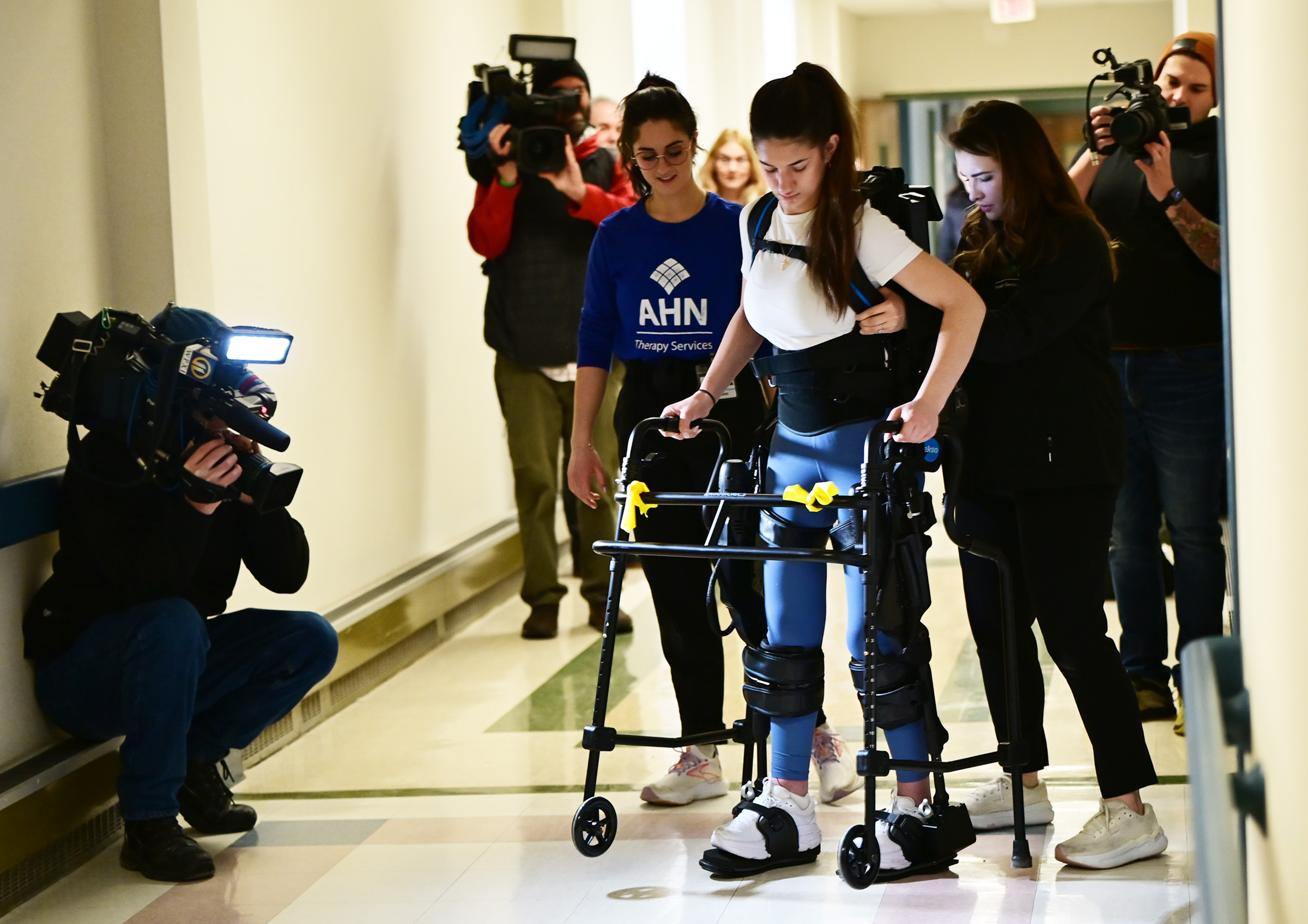
‘It’s just absolutely mind-blowing’
At AHN Suburban Hospital in Bellevue, 18-year-old Mary Maloney walks up and down a hallway wearing a robotic exoskeleton, which beeps and whirs as it supports her steps.
“Do you think we can get to 1,000 steps before we stop?” asked physical therapist Marielle Lynch, as a step-counter on the machine approached 900.
A few weeks ago, Ms. Maloney could manage just 300 steps. Two months ago, she didn’t have an opportunity to stand or walk at all.
That changed last month, when after three years of planning and fundraising, Ms. Maloney’s family and friends and the West Penn Hospital Foundation partnered to bring the EksoNR robotic exoskeleton to AHN Suburban.
“This wearable exoskeleton device will help not only Mary, but dozens of other patients in the area who have suffered spinal cord injuries, strokes and brain injuries,” said Gary Hoover, a physical medicine and rehabilitation doctor at AHN.
Ms. Maloney is in her senior year at North Catholic High School, preparing to go to college for a career in science or medicine.
In August 2020, she was jumping on a trampoline at home when she landed awkwardly and felt a sharp pain in her shoulder blades. Then 13 years old, she got off the trampoline and started to feel her leg function deteriorate.
“I just remember this gut-sinking feeling like when you know something is wrong,” she said Friday, recounting her injury. “My legs started to get weaker and weaker and then I sat down. I couldn’t explain it — I’d obviously never felt it before — but I just couldn’t get up from there.”
Ms. Maloney’s father took her to a hospital, where she was diagnosed with a rare spinal cord stroke. While she still had control of her hands and arms, she was paralyzed from the waist down.
From there, Ms. Maloney embarked on an extensive path of rehabilitation and physical therapy. She traveled for extensive periods to Philadelphia and Louisville for specialty care, and tried physical therapies such as swimming, crawling, horseback riding and electrical stimulation.
But with the technology available in Pittsburgh, she was only able to practice walking if physical therapists were holding up her legs.
About three years ago, her mother, former KDKA-TV reporter Pam Surano, heard about robotic exoskeletons, which not only provide structural support but use sensors to provide guidance and feedback. She began communicating with eksoBionics, a company that manufactured the first FDA-approved exoskeleton for brain injury, stroke and spinal cord injury patients.
When Ms. Maloney was able to do a trial of the device, the results were promising.
“The device is able to detect initiations of muscle contractions that may not be visible or able to be determined by the naked eye,” Dr. Hoover said. “The feedback gave us some indication that there was some muscle activity where we didn’t think there was previously.”
Ms. Maloney’s friends from grade school had formed a fund, Miracles for Mary, and began trying to raise the nearly $200,000 that it would take to bring the device to Pittsburgh.
With the help of the West Penn Hospital Foundation, they were able to do so in December.
“It is truly a real-life miracle to see this happen,” said Adam Klickovich, who contributed funds from a foundation his family established in memory of his mother, Diane M. Foley, who died in 2020 after suffering a spinal cord injury. “We’re just very happy to be a part of this.”
It is the only robotic exoskeleton in Pittsburgh available for outpatient use, according to Dr. Hoover. For about a month, Ms. Maloney has come to AHN Suburban three times per week for physical therapy sessions using the exoskeleton.
“It’s just absolutely just mind-blowing,” she said. “It’s smart and it knows, it works with you, and you just feel this glimmer of hope.”
She has already made improvements not just in her stamina, but also her core strength, said Ms. Surano, of Evans City. She is hoping that her daughter will continue to improve, making progress toward walking independently.
But even for patients who don’t progress toward walking, the exoskeleton has important therapeutic benefits, said Dr. Hoover. It facilitates weight bearing and standing activities, which helps to manage complications of chronic neurological conditions. It also can be used for patients with other conditions that affect mobility, such as multiple sclerosis.
Ms. Maloney, who has benefited from so many people raising money on her behalf, is thankful that other patients with spinal injuries will get to use the device as well.
“My heart really goes out to people in this situation and they don’t get the help and support that I’ve been blessed with,” she said. “I’m just so excited that this is going to open the door to other people. People might not even know that this was an option.”
